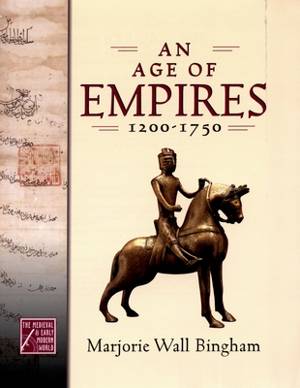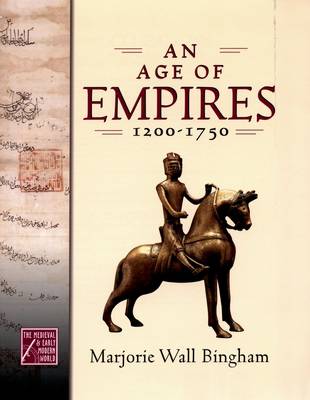
- Afhalen na 1 uur in een winkel met voorraad
- Gratis thuislevering in België vanaf € 30
- Ruim aanbod met 7 miljoen producten
- Afhalen na 1 uur in een winkel met voorraad
- Gratis thuislevering in België vanaf € 30
- Ruim aanbod met 7 miljoen producten
Zoeken
Omschrijving
The Age of Empires includes some of the most colorful, ruthless, and restless figures in all of history. During this time Genghis Khan told his troops to "fall upon the enemy like falcons," Ivan the Terrible expelled Mongol invaders from Russia but murdered his own son in a fit of rage, and Babur the Tiger ruled India, combining ferocity on the battlefield with a love of books and poetry. It is a period of extremes: Muslim Turks tolerated Jews and Christians within the Ottoman Empire yet under the Habsburgs the devastating Thirty Years' War pitted Catholics against Protestants. Lithuanian society was remarkably open, granting women the right to own property and decide their religious beliefs while Spanish and Portuguese colonizers enslaved Native Americans and Africans in Peru and Angola. Beautifully illustrated and filled with maps and primary sources, The Age of Empires captures both the historical sweep and vivid details of this transformative period. From Marco Polo's eyewitness account of an opulent Chinese banquet to a missionary's sermon denouncing Spanish atrocities in the Caribbean, these documents bring the era dramatically to life. They show how the spread of empires meant new lands and great wealth for the conquerors, and death, destruction, and slavery for the conquered. But The Age of Empires also shows how, in their relentless outward expansions, imperial rulers brought vastly different peoples into contact, opening new trade routes and stimulating intellectual development, as cultures exchanged both goods and ideas. In these ways as well as others, the Age of Empires is the beginning of our own age. The Medieval and Early Modern World tells the colorful story of a pivotal period in human history, an era that is crucial to understanding our own times. The expansion of trade and city life, the spread and reform of religious institutions, the rise of regional empires and local feudal regimes, and revolutionary advances in science and technology laid the foundation for the modern world. Told through the words and experiences of the people who lived it -- kings, queens, and commoners, priests and lay people, explorers, scientists, artists, and world travelers -- this is a world history for a new generation.
Specificaties
Betrokkenen
- Auteur(s):
- Uitgeverij:
Inhoud
- Aantal bladzijden:
- 160
- Taal:
- Engels
- Reeks:
- Reeksnummer:
- nr. 4
Eigenschappen
- Productcode (EAN):
- 9780195178395
- Verschijningsdatum:
- 25/08/2005
- Uitvoering:
- Hardcover
- Formaat:
- Genaaid
- Afmetingen:
- 193 mm x 240 mm
- Gewicht:
- 548 g

Alleen bij Standaard Boekhandel
+ 162 punten op je klantenkaart van Standaard Boekhandel
Beoordelingen
We publiceren alleen reviews die voldoen aan de voorwaarden voor reviews. Bekijk onze voorwaarden voor reviews.











